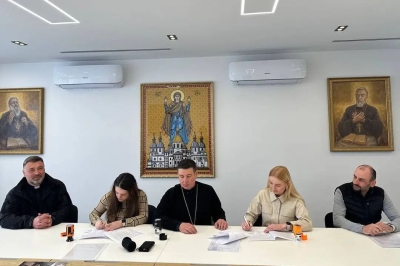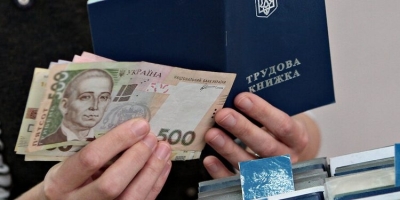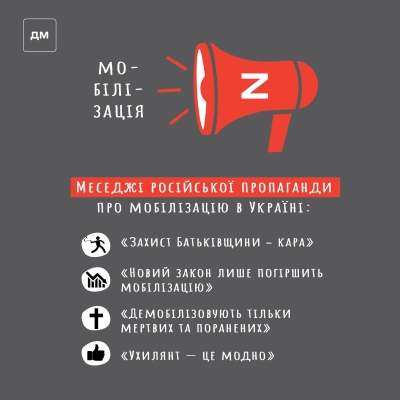Road from Crimea in HIMARS range, tanks stuck in the mud, Ukraine to investigate Russian perfidy. What’s happening on the front line?
Читать на русском языке
Russia has begun widening the road through the Arabat Spit in occupied Crimea to improve logistics, while the road through Armiansk is now in range of the Armed Forces of Ukraine’s (AFU) HIMARS systems and is dangerous to use. According to the Ukrainian Center for National Resistance, Russia needs the road on the Arabat Spit to move equipment to the south of Ukraine.
OSINT analyst DefMon also believes that the main road from Crimea is now under effective control of the HIMARS launcher. According to him, the road through the Arabat Spit is clearly not suitable for heavy traffic now. The only road suitable for the transfer of equipment lies across the Crimean bridge.
Russian troops have continued shelling infrastructure in Kherson, at least three people have been killed as a result of the November 22 shelling, the head of Kherson City Council Oleksandr Leshchenko told Suspilne. Russian UAVs are now scouting across the river to select targets for artillery and missile attacks, according to former US Navy unit commander and analyst Chuck Pfarrer.

The day before, Russia continued shelling the right-bank part of Kherson region and Kherson itself, with explosions heard in the city on November 21. Kherson Regional Council First Deputy Chairman Yuri Sobolevsky, reported that strikes were again recorded against city infrastructure, and civilians were wounded. He did not specify the number of casualties.
Ukraine rebuilt a damaged bridge across the Inhulets river, a right tributary of the Dnipro river, near the village of Zahradivka in the Kherson region. Like other crossings, it was destroyed during the Russian occupation of the right bank of the Dnipro.
Russia is also trying to surround Bakhmut in preparation for a future offensive near Kramatorsk and Slavyansk in the Donetsk region. DefMon, a military analyst, claims that it is impossible to implement such a plan. The pro-Russian outlet WarGonzo noted that one of the key cities for the capture of the entire Donbas (the post calls the capture of the territories a “liberation”) is now Artemivsk (Bakhmut).
“The goal is to break the Siversk – Soledar – Artemivsk line of defense, which ultimately provides access to the Slavyansk-Kramatorsk agglomeration. In this connection, a strategically important condition for reaching Artemivsk was the capture of Maiorsk, which had recently been liberated.”

Military expert and AFU reserve colonel Roman Svitan confirmed in a conversation with The Insider that Russian troops are now advancing in the Donbas and have increased military pressure in the area. According to him, Russia is hitting twice as hard as it has dragged troops there from the right bank of the Dnipro river.
“The front of Vuhledar, Avdiivka, Bakhmut and Lysychansk is burning now, but there is almost no movement because we [Ukraine] have also received reinforcements – the intensity of shelling has increased, the offensive is mostly coming from Russian troops. The Russians are stuck in the city lines of Bakhmut, Soledar, Marinka and Vuhledar, they’re not moving, and they can’t take the city.
In other areas, for example, along the Dnipro [river] near Kherson, Ukrainian artillery is brought in. On the Zaporizhzhia front, the Russians are pulling in partially mobilized men who have been trained for these two months at the training grounds – they go from Rostov to Mariupol and then to the Zaporizhzhia direction, namely Zaporizhzhia, Huliaipole, Orikhove, Donetsk and as far as 100 km to the Azov Sea coast line.”
The fall has brought muddy weather, known in Ukraine as bezdorizhzhia, or “roadlessness,” – unpaved roads have become impassable or difficult to navigate due to seasonal rains. Videos are appearing online depicting equipment struggling to move on wet soil. For example, the MilitaryLand military Twitter blog posted a video of a T-64BM2 tank from the Ukrainian 92nd Mechanized Brigade stuck in the mud.
A video showing a Ukrainian MRAP MaxxPro armored personnel carrier experiencing issues due to the mud was also posted online.
According to Svitan, Ukrainian troops are conducting offensive operations near Makiivka in the Luhansk region. Svitan acknowledged issues with the offensive in some directions due to the muddy weather. As such, the AFU are advancing from Kupyansk to Svatovo, but because of the rains the viscous soil hinders the offensive.
“Now it is better to enter the [urban] agglomerations while the rains are coming, and in early December it’ll freeze up too. It’s best to go into Donetsk, Orlivka, and Makiivka. When the rains stop or it freezes, there will be movement to Melitopol and from Nova Kakhovka to Armiansk. There will be active movement from near Orikhove to Melitopol and from near Svatovo and Makiivka towards Shchastia, that is, on the Luhansk front and Zaporizhzhia. Orikhove and Melitopol have been [ripe for the taking] for a long time, it’s just the weather that got in the way.”
According to the WarMapper portal, which publishes updated maps every 24 hours, there have been no noticeable changes on the front line.

Air defense systems have gone off in Sevastopol, according to videos published in local social network groups. Sevastopol Governor Mikhail Razvozzhayev said that two drones were shot down while attempting to approach the Balaklava thermal power station, and three more drones were repelled in attacks over the Black Sea. According to a report by Russian state-owned news agency RIA Novosti citing the city government, the movement of maritime passenger transport in Sevastopol has been suspended. Pro-Russian Telegram channels also mentioned the operation of air defense systems over Balaklava and near Yevpatoriia.
After a series of massive rocket attacks, the Ukrainian authorities have given a new assessment of the Russian missile arsenal.
Ukrainian Defense Minister Oleksii Reznikov published an infographic showing that Russia has already used up:
- 87% of the missiles for the Iskander SAM system;
- 26% of the 3M55 Onyx anti-ship missiles;
- 13% of anti-aircraft guided missiles for the S-300 SAM system;
- 63% of Kalibr cruise missiles;
- 50% of X-101 cruise missiles;
- 50% of X-555 cruise missiles;
- 68% of X-22 and X-32 cruise missiles;
- 59% of X-35 anti-ship missiles;
- 27% of hypersonic Kh-47M2 “Kinzhal” missiles.

Following the publication of a video online showing Russian soldiers in Makiivka lying dead with their hands in the air and with uniforms covered in blood, Ukraine has announced a pre-trial investigation into perfidy committed by the Russian troops. A criminal investigation has been launched under the article on “violation of laws and customs of war” (Part 1 of Article 438 of the Criminal Code of Ukraine), the Prosecutor General’s Office of Ukraine told The Insider.
According to the Prosecutor General’s Office, the Russian servicemen opened fire on the Armed Forces of Ukraine (AFU) during a simulated surrender. The Luhansk regional prosecutor’s office has entered that information into the unified register of pre-trial investigations.
“According to the results of media monitoring, it became known that in the village of Makiivka in the Luhansk region, Russian military personnel opened fire on the Ukrainian defenders while imitating surrender. Such acts are prohibited by international humanitarian law. During the pre-trial investigation, measures will be taken to establish all the circumstances of this event and legal assessment will be given to all its participants.”
According to article 37 of the Protocol Additional to the Geneva Conventions of 12 August 1949, it is forbidden to kill, wound or take prisoners of war by resorting to perfidy. Perfidy is defined as “acts inviting the confidence of an adversary to lead him to believe that he is entitled to, or is obliged to accord, protection under the rules of international law applicable in armed conflict, with intent to betray that confidence.”
The Russian Defense Ministry accused the Ukrainian Armed Forces of war crimes based on the footage, claiming that “massacres of unarmed Russian prisoners of war” took place. Russia’s Investigative Committee has opened a criminal case on the murder and mistreatment of Russian POWs on the territory of the so-called “LPR.”
Earlier, Mikhail Podolyak, advisor to the head of the Ukrainian presidential office, said in an interview to journalist Alexander Plushev and Tatiana Felgengauer that the Ukrainian authorities have a full version of the video depicting the shooting. According to Podolyak, some of the Russian servicemen were actually intended to surrender, while others opened fire on the Ukrainian military. Podolyak assured that the video is being investigated, but he did not publish its full version.
“When one watches a fragment of the video, one may get the impression that there is a violation of the Geneva Convention when surrendering. But when one watches the full video, it is clear that some of the Russian servicemen were really going to surrender, and some of them opened fire on the Ukrainians who were trying to carry out the procedure. Paragraph 47 of the Geneva Convention is very clear that when surrendering, if there is a threat from the surrenderers, there is no such parameter as ‘prisoners of war.’ In other words, this is an ordinary, essentially military engagement that took place.”
Governor Vyacheslav Gladkov of Russia’s Belgorod region has reported on casualties and deaths from explosions and shelling almost every day. For example, according to him, on November 22 a civilian died during the shelling of the town Shebekino, sustaining a lethal skull and head injury when she was thrown back by the blast wave. She died in an ambulance. Gladkov noted that during the day, shelling from the direction of Ukraine had struck the territory of the Veterans of War Hospital, causing no casualties. The shells cut the building’s facade, broke several windows, and damaged the gas pipeline in the neighboring area.
The governor also stated that two more people were killed in the village of Staroselie in Krasnoyaruzhsky district. According to Gladkov, a married couple blew themselves up with an “unidentified type of ammunition.” He added that investigative measures are being carried out to find out how the family ended up in the village. On October 27, a state of emergency was introduced in the municipality. The “yellow” level of terrorist danger in the region was extended for two more weeks – it will remain in effect until December 6.








